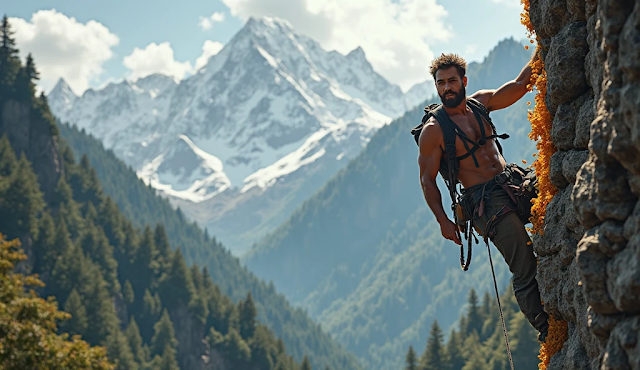Introduction: Pokhara’s Natural Wonders
Pokhara, Nepal’s adventure capital, is famed for its serene lakes, mountain vistas, and adrenaline sports. Yet two of its most captivating attractions lie hidden in plain sight: Devi’s Fall, a thunderous waterfall vanishing into an underground abyss, and Gupteshwor Cave, a sacred labyrinth of stalactites and shrines. Together, they form a mystical duo where nature’s power meets spiritual lore. Whether you’re a thrill-seeker, culture enthusiast, or photographer, this guide unlocks everything you need to explore these iconic sites.
Devi’s Fall: The Legend of the Disappearing Waterfall
History and Mythology
Locally known as Patale Chhango (Hell’s Falls), Devi’s Fall earned its name from a tragic 1961 incident where a Swiss traveler named Davi (later mispronounced as “Devi”) was swept into the gorge during monsoon rains. The waterfall’s mysterious plunge into an underground tunnel has since fueled myths of it being a gateway to the underworld.
The Geological Marvel
Formation: Carved by the Pardi Khola stream, the waterfall cascades 500 feet into a limestone sinkhole.
Seasonal Changes: In monsoon (June–September), the falls roar violently, while winter reduces it to a gentle flow.
Viewing Platforms: Safe walkways and railings offer close-up views of the churning waters.
Visitor Tip: Visit post-monsoon (October–November) to witness the falls at their most dramatic.
Gupteshwor Cave: A Sacred Subterranean Journey
Spiritual Significance
Dedicated to Lord Shiva, Gupteshwor Cave is revered as a gupta (hidden) sanctuary. Locals believe the cave’s underground river connects to the holy Bagmati River in Kathmandu, 150 km away!
Exploring the Cave
Entrance: A narrow staircase descends into the dimly lit cavern adorned with stalactites and Hindu shrines.
The Inner Sanctum: A small shrine houses a self-emerged (swayambhu) Shiva lingam, where priests perform rituals.
The Waterfall View: Deep inside, a grated window frames a surreal view of Devi’s Fall’s underground cascade.
Safety Note: The cave is slippery; wear sturdy shoes and use handrails.
How to Visit: Practical Information
Location & Accessibility
Address: Southern Pokhara, 2 km from Lakeside (10-minute drive).
Transport: Taxi (NPR 300–500) or rent a bicycle (NPR 300/day).
Combined Ticket: NPR 100 for foreigners (includes both Devi’s Fall and Gupteshwor Cave).
Opening Hours
Daily: 7:00 AM – 6:30 PM (April–September); 7:00 AM – 5:30 PM (October–March).
Best Time to Visit
Ideal Seasons: Autumn (October–November) and Spring (March–April) for pleasant weather.
Avoid: Heavy monsoon rains (July–August) make paths slippery and views obscured.
Photography Tips: Capture the Magic
Devi’s Fall: Use a slow shutter speed (tripod recommended) to blur the waterfall’s motion.
Gupteshwor Cave: Experiment with low-light settings or a flashlight to highlight textures.
Golden Hour: Visit early morning or late afternoon for soft, dramatic lighting.
Nearby Attractions: Extend Your Adventure
Phewa Lake: Paddle a boat or stroll Lakeside’s cafes after your visit (1 km away).
World Peace Pagoda: Hike or drive to this iconic hilltop stupa for panoramic views.
Bindhyabasini Temple: A 15-minute drive to Pokhara’s oldest Hindu shrine.
Visitor Tips for a Smooth Experience
Footwear: Non-slip shoes for the cave’s damp steps.
Respect Customs: Remove shoes before entering Gupteshwor’s shrine areas.
Guides: Hire a local guide (NPR 500–800) to decode legends and geology.
The Legends Revisited: Stories from Locals
The Eternal Flame: A natural gas leak in Gupteshwor Cave once fueled a perpetual flame, now extinguished.
Spiritual Guardians: Many believe cave formations resemble Hindu deities watching over visitors.
FAQs: Your Questions Answered
Q: Why is it called Devi’s Fall?
A: Named after a Swiss tourist, Davi, who tragically drowned here in 1961.
Q: Can you see Devi’s Fall from inside Gupteshwor Cave?
A: Yes! A viewing window inside the cave frames the waterfall’s underground plunge.
Q: Is the cave suitable for claustrophobic visitors?
A: The main path is spacious, but the deepest sections are narrow—proceed with caution.
Q: Are there combined tickets for both sites?
A: Yes, a single ticket (NPR 100 for foreigners) grants access to both.
Why Devi’s Fall & Gupteshwor Cave Belong on Your Pokhara Itinerary
From the roar of Devi’s Fall to the serene spirituality of Gupteshwor Cave, this duo encapsulates Pokhara’s blend of natural grandeur and cultural depth. Whether you’re marveling at the waterfall’s raw power or meditating in the cave’s shadowy silence, these sites promise a journey into Nepal’s heart.
Pro Tip: Pair your visit with sunrise at Sarangkot or a paragliding adventure for the ultimate Pokhara day!
#DevisFallPokhara, #GupteshworCave, #PokharaTravel, #NepalNature
Pokhara’s Top 10 Attractions
Best Cafes in Lakeside Pokhara






0 Comments